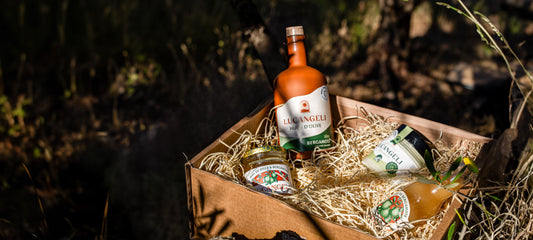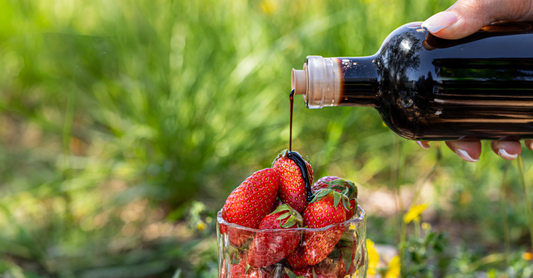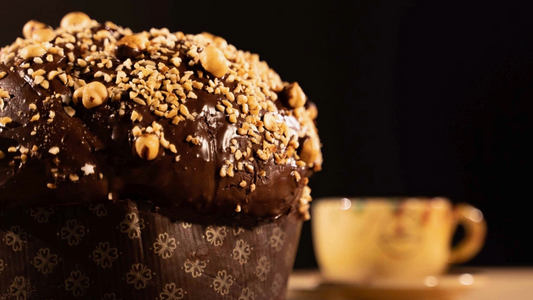Known for its rich cultural heritage and complex flavors , balsamic vinegar is a true treasure of Italian gastronomy . Originating in the Modena region, this unique condiment is distinguished by its meticulous manufacturing process and patient aging in barrels . It is made from grape must , a subtle blend of fresh grape juice, skins, seeds, and stems, primarily from Trebbiano and Lambrusco grape varieties. This must is then gently cooked to concentrate its intense aromas and fermented to produce a robust and elegant vinegar that, after aging in oak barrels, reveals all its authenticity and unique character .
Origins of balsamic vinegar
Balsamic vinegar , a true emblem of Italian cuisine, is an exceptional product originating from the Modena region. Its production is strictly regulated and benefits from a PGI (Protected Geographical Indication) , guaranteeing its authenticity and quality. Balsamic vinegar is distinguished by its artisanal production, the fruit of ancestral know-how passed down from generation to generation. Lucangeli balsamic vinegar , for example, is aged in oak barrels, which gives it a balanced acidity and a characteristic sweetness. Its shiny black color is the result of slow cooking of the mosto and an infusion in oak barrels. Prized for its unique taste, velvety texture and intense aroma, balsamic vinegar is much more than a simple condiment, it is a true treasure of Italian gastronomy.
Characteristics of real balsamic vinegar
Real balsamic vinegar , also known as traditional balsamic vinegar, is a unique product, famous for its deep black color , mild flavor , and aromatic complexity. It is produced exclusively in the Modena region of Italy, from cooked grape must . The grape varieties mainly used are Trebbiano and Lambrusco . This precious condiment is characterized by balanced acidity and a marked sweetness , with notes of fruit, wood, and caramel. Its use in cooking is highly appreciated for enhancing the flavors of dishes.
The ingredients of real balsamic vinegar
The key ingredients in true balsamic vinegar are cooked grape must and wine vinegar . Must is a mixture of grape juice, skins, seeds, and stems. This must is then simmered to concentrate the natural sugars and begin the fermentation process. Wine vinegar is added to aid fermentation and provide a balanced acidity to the final product. It's important to note that true balsamic vinegar contains no artificial colors, flavors, or preservatives.
The production and aging methods of real balsamic vinegar
The production of true balsamic vinegar is a long and meticulous process. Cooked grape must is first fermented to produce vinegar . This vinegar is then aged in wooden barrels, usually oak , for a minimum of 12 years to obtain the PGI (Protected Geographical Indication) label. During aging, the vinegar is transferred between different wooden barrels to acquire the characteristic aromas and flavors. This aging process gives balsamic vinegar its smoothness, complexity, and depth of flavor.
Distinction between real balsamic vinegar and commercial variants
Genuine Aceto Balsamico , an authentic artisanal product from the Modena region of Italy, is often confused with its more commercial and widespread variant: Balsamic Vinegar of Modena PGI and Condimento balsamico . Despite their pleasant aromas, these alternatives fail to match the rich, robust flavor of traditional Aceto Balsamico. This gourmet condiment is produced in limited quantities, adhering to strict manufacturing and maturation standards to ensure superior quality. Free from additives such as caramel, its natural sweetness and intense brown coloring are the result of careful cooking, secondary fermentation, and oak barrel aging, for a truly unparalleled culinary experience.
The Value of Real Balsamic Vinegar
Genuine balsamic vinegar is an exceptional product, whose value lies in its long and complex artisanal production method. It is distinguished by its unique taste, a perfect balance between acidity and sweetness, as well as its deep color and velvety consistency. This product of Italian gastronomy is made from grape must, mainly from the Trebbiano and Lambrusco varieties, traditionally grown in the Modena region. This must is then cooked, concentrated, and fermented, before being aged in oak barrels, a process that can last several years. Lucangeli balsamic vinegar , for example, is recognized for its exceptional quality and its barrel aging, which gives it a rich and complex flavor.
The criteria for evaluating real balsamic vinegar
The quality of balsamic vinegar is judged by several criteria. The first is the PGI (Protected Geographical Indication) label, which guarantees the origin and adherence to traditional production methods. Visual appearance is also important: balsamic vinegar must have a deep black color, a sign of its concentration and aging in oak barrels. Its consistency must be dense and syrupy. Finally, the taste must be a clever blend of acidity, sweetness, and aromatic complexity, with notes of dried fruit, honey, and wood. It's also worth noting that true balsamic vinegar does not contain wine vinegar, which is often used in industrial imitations.
The impact of provenance on the quality of balsamic vinegar
The origin of balsamic vinegar has a decisive impact on its quality. The Modena region of Italy boasts an ideal climate and terroir for growing grapes and producing this condiment. The traditional production method, which involves long-term cooking of the grape must and aging in oak barrels, has been perfected over the centuries in this region. Furthermore, the PGI designation guarantees that the balsamic vinegar originates from this region and adheres to its ancestral production methods. Therefore, when purchasing balsamic vinegar, it is essential to check its origin and label.
Genuine balsamic vinegar , originating from the Modena region of Italy, is a culinary staple and a premium wine product sought after for its unique sweetness and acidity. Traditionally, it is aged in oak barrels , giving it unparalleled depth of flavor and concentration. Lucangeli balsamic vinegar , for example, is a PGI (Protected Geographical Indication) product that guarantees its origin and quality.
How to Use Real Balsamic Vinegar
The uses of true balsamic vinegar go far beyond simple salad dressing. Its aromatic complexity and richness in antioxidants make it a choice for cooking and eating. It can be used as a marinade for meat, to deglaze pans, or even poured over desserts like vanilla ice cream. Due to its high concentration, it is often used sparingly to preserve its distinctive flavor.
Modern Uses of Real Balsamic Vinegar
Today, real balsamic vinegar is increasingly popular in contemporary cuisine. It has become an essential ingredient for enhancing the flavor of dishes, whether adding a touch of acidity to a sauce, intensifying the flavor of a meat dish, or adding a sweet note to a dessert. It is also used in cocktails to add a touch of originality. However, it is important to be wary of imitations and always check the PGI label to ensure the quality of the product.







 lucangeli.it
lucangeli.it